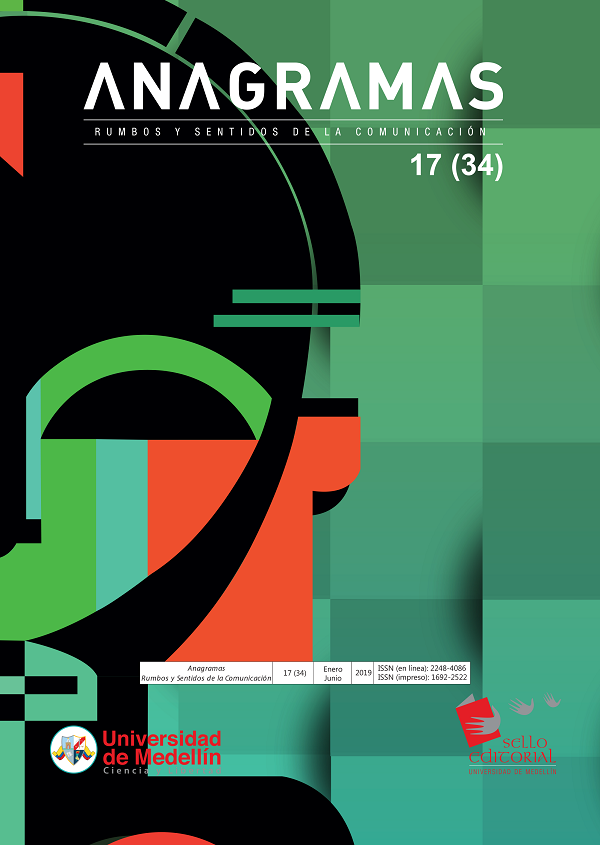Trends in online radio as a way of supporting the construction of strategies tailored for the medium
Main Article Content
Abstract
By means of a literature review, this paper presents an analysis of trends that impact the radio at digital level to facilitate the strategic formulation of online stations from the identification of trends, the transformation of the medium and the recognition of digital actions. The methodological proposal was developed with the Micmac matrix in which three categories are considered: 1) characteristics of the radio as a means of diffusion, 2) digital consumption strategies, and 3) the relationship between audience and medium. This approach facilitates the process of gathering trends and information for its implementation. Secondary sources such as IAB, Hubspot, and P & M Magazine, among others, were used, taking the 306Radio digital station as a reference. As a result of using the aforementioned matrix, three trends that impact the radio at digital level were found. First, programmatic audio; secondly, programming mix; and thirdly, radio branded content. These trends, explored in a real context, facilitate the strategic approach through the support of new technologies for the medium.
Article Details
References
Arnau, J. (1996). Métodos y técnicas avanzadas de análisis de datos en ciencias del comportamiento. Barcelona: Universitat.
Barrios, A. (2013). La radio en la era de la sociedad digital. adComunica. Revista de Estrategias, Tendencias e Innovación en Comunicación, (5), 37-54.
Bitar, D. (2018). Radio: cinco tendencias que marcarán el futuro. Recuperado de http://www.revistapym.com.co/radio-cinco-tendencias-marcaran-futuro
Corporación Colombia Digital. (Septiembre 26 de 2017). Colombia Digital. Recuperado de https://colombiadigital.net/actualidad/bytes/item/9862-5-tendencias-que-cambiaran-la-radio-como-laconocemos.html
Costa, M. D., Moreno, E. y Amoedo, A. (2012). La radio generalista en la red: un nuevo modelo para la radio tradicional. Anagramas, 10(20), 165 -180.
Crettaz, J. (2103). Radios online: un fenómeno nuevo que se hace escuchar. Recuperado de https://www.lanacion.com.ar/1546747-radios-online-un-fenomeno-nuevo-que-se-hace-escuchar
García, T. y García, A. (2001). Medios de comunicación, sociedad y educación. Castilla:Universidad de Castilla.
González, M. (2010). La ciberradio: nueva alternativa de futuro para la radio. Juventud y nuevos medios de comunicación, (88), 51-62.
Godet, M. (2007). Prospectiva estratégica: problemas y métodos. Recuperado de http://www.laprospective.fr/dyn/francais/memoire/Cajadeherramientas2007.pdf
Herreros, M. C. (2009). Comunicación interactiva en los cibermedios. Comunicar Revista Científica de Educomunicación, 17(33), 15-24.
Levy, P. (2007). Cibercultura. La cultura en la sociedad digital. Educatio Siglo XXI, (26), 295-298. Recuperado de http://revistas.um.es/educatio/article/viewFile/46731/44761
Martínez, M. y Prata, N. (2017). La radio en busca de su audiencia: hacia una escucha diversificada y multiplataforma. Intercom–RBCC, 40(3), 109-128. doi: 10.1590/1809-5844201737
Ministerio de Tecnologías de la Información y las Comunicaciones. MINTIC. (2018). Boletín trimestral de las TIC. Recuperado de https://colombiatic.mintic.gov.co/679/articles-75854_archivo_pdf.pdf
Orihuela, J. (2015). Los medios después de internet. Barcelona: Universitat Oberta de Catalunya.
Romero, H. (2011). La digitalización de la radio deportiva. Fonseca, Journal of Communication, 3, 132-152.
Scolari, C., Winocur, R., Pereira, S. y Barrechene, C. (2018). Alfabetismo transmedia. Recuperado de http://www.comunicacionysociedad.cucsh.udg.mx/index.php/comsoc/article/view/7227/5998
Socelec, S. (2017). La conectividad y el internet de las cosas. Energética XXI, 41.
Tigre, R. (22 de marzo de 2018). Las 10 tendencias del audio digital para 2018. Recuperado de http://blog.audio.ad/es/2017/12/las-10-tendencias-del-audio-digital-para-2018/





